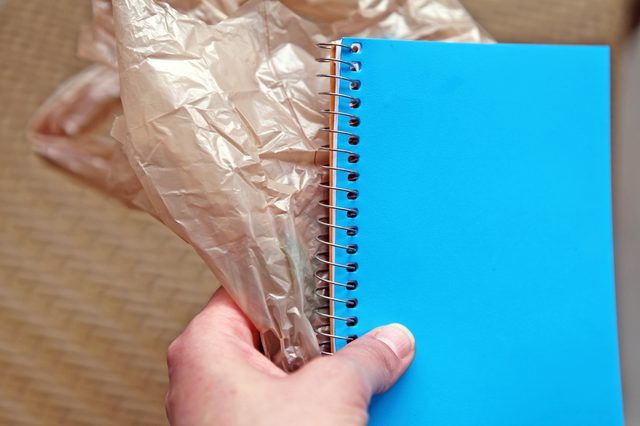Bulbs
Flower Basics
Flower Beds & Specialty Gardens
Flower Garden
Garden Furniture
Garden Gnomes
Garden Seeds
Garden Sheds
Garden Statues
Garden Tools & Supplies
Gardening Basics
Green & Organic
Groundcovers & Vines
Growing Annuals
Growing Basil
Growing Beans
Growing Berries
Growing Blueberries
Growing Cactus
Growing Corn
Growing Cotton
Growing Edibles
Growing Flowers
Growing Garlic
Growing Grapes
Growing Grass
Growing Herbs
Growing Jasmine
Growing Mint
Growing Mushrooms
Orchids
Growing Peanuts
Growing Perennials
Growing Plants
Growing Rosemary
Growing Roses
Growing Strawberries
Growing Sunflowers
Growing Thyme
Growing Tomatoes
Growing Tulips
Growing Vegetables
Herb Basics
Herb Garden
Indoor Growing
Landscaping Basics
Landscaping Patios
Landscaping Plants
Landscaping Shrubs
Landscaping Trees
Landscaping Walks & Pathways
Lawn Basics
Lawn Maintenance
Lawn Mowers
Lawn Ornaments
Lawn Planting
Lawn Tools
Outdoor Growing
Overall Landscape Planning
Pests, Weeds & Problems
Plant Basics
Rock Garden
Rose Garden
Shrubs
Soil
Specialty Gardens
Trees
Vegetable Garden
Yard Maintenance
How to Diagnose Lawn Problems
How to Diagnose Lawn Problems. Dead spots, fungus or discolored areas in your lawn are among the most discouraging and common lawn-related problems homeowners face. Unfortunately, it's not always a simple task to quickly identify the problem; many common issues have similar symptoms. The problem isn't always due to pests or disease; often the...
Dead spots, fungus or discolored areas in your lawn are among the most discouraging and common lawn-related problems homeowners face. Unfortunately, it's not always a simple task to quickly identify the problem; many common issues have similar symptoms. The problem isn't always due to pests or disease; often the problem stems from improper management practices or other human error. Understanding a few basics about your specific lawn will help you more easily diagnose the problem and treat it, although you may still need help from a professional.

Things You'll Need
Dish soap
Sprinkling can
String
Trowel
Step 1
Identify the pattern of damage across your lawn, including the shape of dead or discolored patches, how large the patches are and when they show up. This can help you determine whether a pest or disease is at fault, or whether other factors played a role. For example, spots that do not grow or spread are most often the result of chemical or physical factors such as fertilizer burn or dog urine.
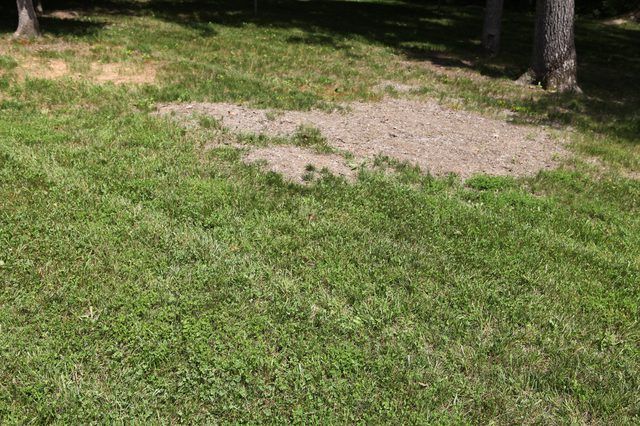
Step 2
Review your lawn care over the past year or so; in many cases, fertilizer burn, herbicide damage and poor irrigation practices result in dead or damaged areas. If you have fertilized or applied herbicide in the past two weeks, you may have fertilizer burn or herbicide damage. If you haven't fertilized for eight months or so, you may have nutrient deficiencies in your lawn.

Step 3
Find out exactly what species of turfgrass is growing in your lawn. Knowing the kind or kinds can help you determine different issues. For example, many pests prefer certain species of turf over others; certain turf species may succumb to more issues in your region than others.

Step 4
Examine your lawn in the early morning as opposed to late afternoon. Many symptoms are much more visible in the morning, particularly those caused by fungus and other diseases.
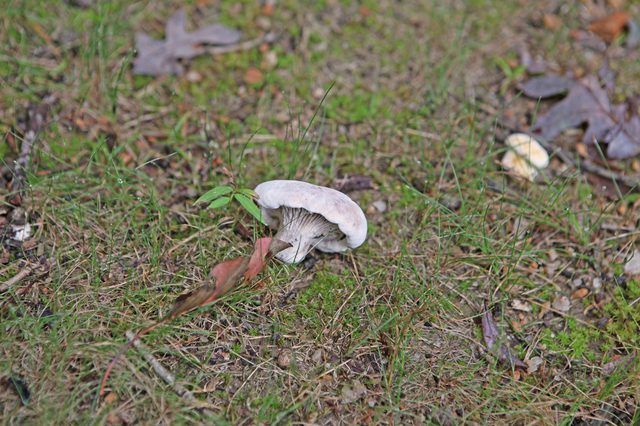
Step 5
Note the weather conditions, as many diseases and pests favor specific conditions. For example, pythium blight's small, irregular patches spread more quickly in low, wet spots when temperatures reach 80 to 90 degrees Fahrenheit. Fairy rings, most commonly identified by rings or half rings of dark green grass or or dead grass with visible mushrooms in them, favors soils with thick thatch and insufficient water. Dollar spot -- straw-colored spots that merge -- favors moderate temperatures and excess moisture.
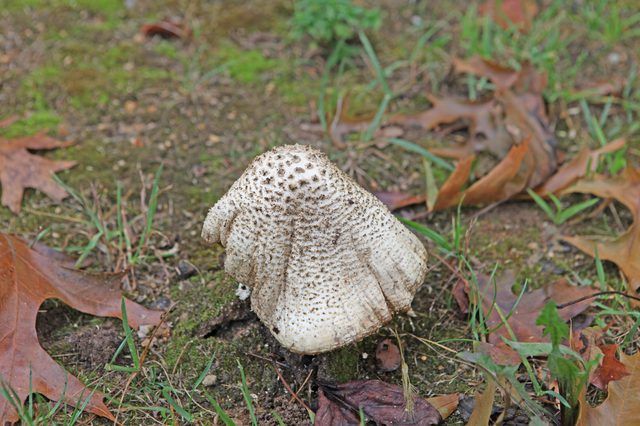
Step 6
Review your mowing practices. Mowing too low can scalp your lawn and result in dead patches; mowing infrequently can shock your grass, which depletes moisture in the roots and weakens the plant. A dull blade will rip the grass instead of cutting it, resulting in damage to the plant.
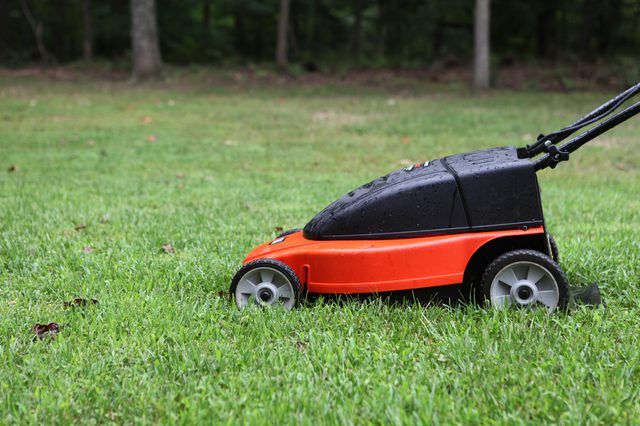
Step 7
Review your irrigation schedule. Frequent shallow watering results in weak, shallow roots. Too much water can result in a crust on the surface of the soil that reduces the ability of the soil and grass to take up water and nutrients. A thick thatch layer may also prevent the water from getting to the turf roots in localized areas.
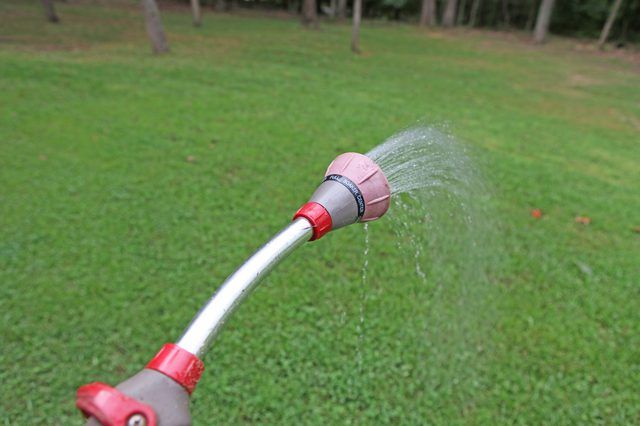
Step 1
Mix 1 to 2 fluid ounces of dish soap into 1 gallon of water in a sprinkling can.

Step 2
Mark off 1 square yard of lawn that includes both healthy and unhealthy grass using string.
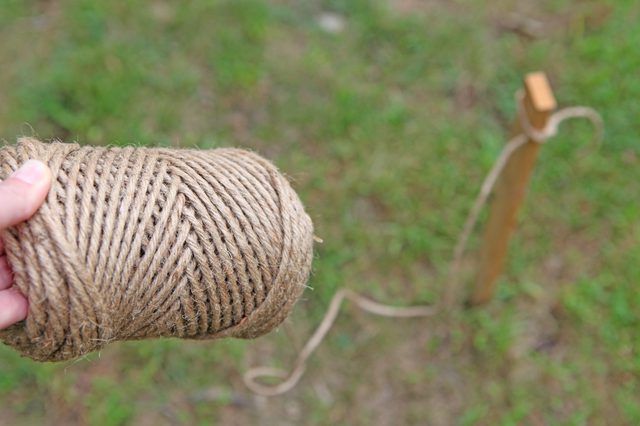
Step 3
Sprinkle the water evenly over the marked-off area and wait five to 10 minutes.

Step 4
Collect samples of the insects that emerge from the lawn. The soap mixture draws both adults and larval insects to the surface.
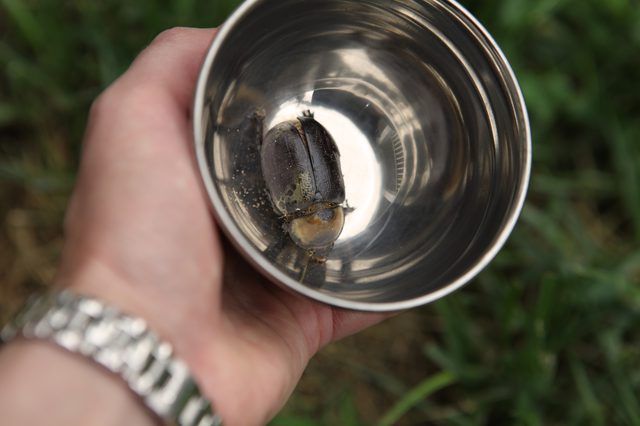
Step 5
Count the number of each type of insect you find to help determine whether they are the cause of your lawn issues. For example, the University of California Statewide Integrated Pest Management Program suggests threshold levels for certain pests. Armyworms require treatment if you find five per square yard during the drench test; southern cinch bugs require treatment if you find 135 per square yard.
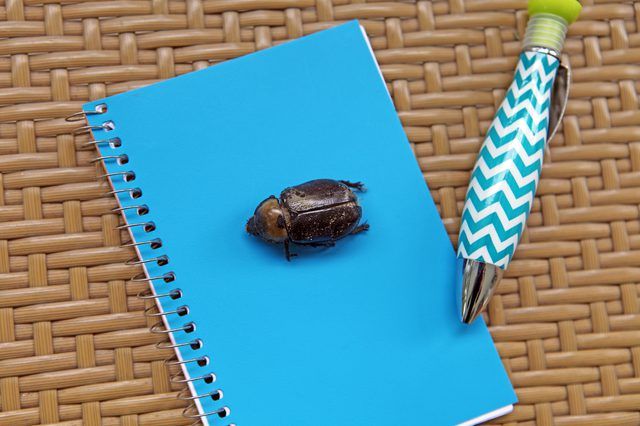
Step 1
Note every distinct feature of your unhealthy lawn. For example, note whether the shape of the dead patches is irregular, whether your unhealthy lawn has visible powdery substance growing on the blades and what color the grass is. Many common lawn diseases have specific characteristics, such as discolored blades. Dollar spot, for example, is often characterized by hourglass-shaped lesions along the blades.
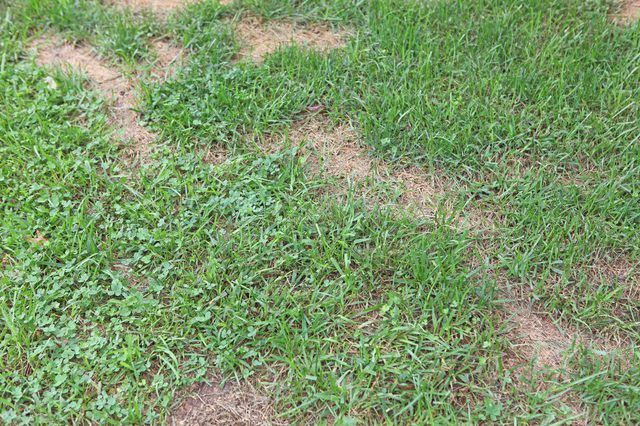
Step 2
Note whether there are new fungi or bugs within your grass, including mushrooms. Look for small insects or minute details with the aid of a 10-times magnifying hand lens. Note any discoveries.
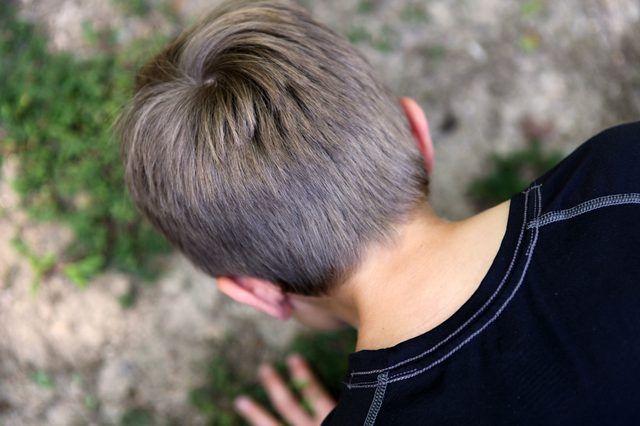
Step 3
Collect samples from around the unhealthy patch by digging with a trowel and collecting the blade, thatch layer, soil and root system. Dig near the edge of problem patches to collect samples in varying stages of the disease.

Step 4
Take the sample and any notes to your local extension office or a reputable nursery for help in identification.
